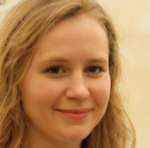Photography entered the advanced age in the mid-90s, and the subsequent flood of specialized development has put in the curriculum of the best photography college in India. It is in practice through cameras all over the place, from satellites to cellphones. Be that as it may, more significant changes in the innovation are yet to come.
- Because of proceeded with progress in programming and preparing power, look into labs are continually investigating new thoughts regarding what cameras and photos can do.
New Scientist explores the present forefront look into undertakings to perceive what the eventual fate of photography and photography course in India may hold.
Brisk connections:
- Freezing movement,
- Preventing glare,
- Single-pixel camera,
- Quantum photography
- Freezing movement
Cameras utilize short exposures, programming, or in any event, moving sensors to address for camera shake. In any case, they can’t expel movement obscure – the fluffy impressions made by objects moving during the presentation.
Presently, however, MIT specialists drove by Anat Levin have thought of an approach to avert it. During the introduction, their camera rushes to one side before bit by bit, stopping and afterward quickening the other way.
See a case of the outcomes.
The development guarantees that are paying little respect to its speed, any article moving to either the left or the privilege, is impeccably caught by the camera for a small amount of the introduction.
The article is out of the center on different occasions during the introduction. Thus, in the last photo, all items show up as foggy chaos. Mainly, however, all details – in the case of moving or static during the introduction – are obscured to a similar degree so that the last picture can be “de-obscured” rapidly and effectively.
A mechanical tripod like this one that takes exceptionally nitty gritty displays could be adjusted to move the camera during the introduction, carrying Levin’s plan to experts and purchasers the same.
- Farewell to glare
Although glare brought about by splendid light sources can be utilized aesthetically, it ruins a lot more photographs than it improves.
Presently Ramesh Raskar and partners at Mitsubishi Electric Research Laboratories, Cambridge, Massachusetts, have an approach to demolish it.
See a case of their outcomes.
Glare happens because not all light that hits a focal point is engaged onto a camera’s sensor. A little portion is reflected inside the focal point, developing in unusual spots. On the off chance that a light source is sufficiently brilliant, this impact can dye out pieces of a picture.
They planned a cover that fits between a camera’s focal point and picture sensor, peppered with lines of little openings that each demonstration like a pinhole camera. Each gap catches a small round lump of the camera focal point’s yield and concentrates it on the sensor.
The picture on the camera sensor is made out of many little dabs, somewhat like a Pointillist artistic creation.
- Pared-down pixels
Advanced cameras have been advertised for a considerable length of time, utilizing the number of pixels or megapixels on the sensor as a check of how a lot of detail they can catch.
Be that as it may, Richard Baraniuk and Kevin Kelly at Rice University in Houston, Texas, think megapixel sensors are inefficient. They have built up a one-pixel camera that produces shockingly great outcomes.
The pair calls attention to that the majority of the huge number of pixels a camera records are disposed of when the last packed picture is created. Be that as it may, a scientific system makes it conceivable to work in reverse, beginning with a little example of data and growing it into a better picture.
The one-pixel camera contains a variety of little mirrors where the sensor would normally be, each fit for coordinating light onto the single-pixel sensor. At any one time, the camera coordinates a haphazardly chosen half of the mirrors onto the sensor, catching simply a large portion of the picture each pixel in turn. That procedure is rehashed up to multiple times in only a couple of moments to create a dataset that can be extrapolated into the last picture with a bigger number of pixels than were caught.
Also read : Best Technology Blog Website
- Shooting the undetectable
Satellite perspectives on the Earth are frequently darkened by the cloud. Be that as it may, a camera that adventures quantum material science to photo pictures it can’t straightforwardly observe would have no such issues.
Yanhua Shih of the University of Maryland and associates endeavors quantum impacts that can connect sets of photons.
A ‘splitter’ isolates photons from a solitary light source into two shafts. One headed towards the camera sensor and the different towards the item to be shot.
At the point when a photon skips off the toy, it is recorded by a photon locator next to it. Once in a while, the photon identifier and camera record a photon at the very same time. Those two photons are connected by a quantum impact called “two-photon obstruction,” and both possess a similar situation in their particular pillars.

Rachael Villam is a certified crypto zealot, finance writer, and a steady swing trader. She is passionate about blockchain’s capacity to transform cities, commerce, and the entire banking system as we know it. Dune bashing, camping, and working with kids are his non-crypto interests.

